 In fall 2011, State Bar President Jim Brennan created a Judicial Task Force to study and report to the Board of Governors on ways the State Bar might promote a fair and impartial judiciary to improve the administration of justice for all Wisconsin residents. The task force worked for approximately a year and a half debating various options. In the end, it recommended amending the Wisconsin Constitution to change the term of office for Wisconsin Supreme Court justices to a single elected 16-year term.
In fall 2011, State Bar President Jim Brennan created a Judicial Task Force to study and report to the Board of Governors on ways the State Bar might promote a fair and impartial judiciary to improve the administration of justice for all Wisconsin residents. The task force worked for approximately a year and a half debating various options. In the end, it recommended amending the Wisconsin Constitution to change the term of office for Wisconsin Supreme Court justices to a single elected 16-year term.
In September 2013, the task force presented its recommendation to the Board of Governors, which overwhelmingly voted to support the change. Upon passage of the policy position, State Bar President Patrick J. Fiedler created a Judicial Election Steering Committee to educate the membership, the legislature, and the general public about the proposed constitutional amendment. [See the accompanying sidebar to learn about Judicial Election Steering Committee and Judicial Task Force members.]
A Wisconsin Lawyer reporter interviewed Joe Troy, task force chair and steering committee vice chair, and task force members Tom Shriner, Christine Bremer Muggli, and Catherine Rottier; and John Orton, steering committee chair, to learn more about the proposal.
It might be helpful to give a little background on the task force. For instance, how was it established and how did it operate?
Troy: When Jim Brennan approached me about serving as chair, I knew that the composition of the task force would be very important. We needed a group of well-respected and thoughtful attorneys who had a passion for the law and a just legal system. It was equally important that the committee be a mix of both conservative- and liberal-oriented members who would be willing to listen and respectfully debate the issues. I also felt that keeping this initial group small would facilitate our ability to fully discuss the issues and find opportunities to meet frequently. The year and a half that the four of us studied, debated, found consensus, wrote, and finally presented our ideas has been among the most fulfilling professional experiences of my career.

“If sitting supreme court justices continue to run for office while they are in office, they will inevitably continue to be politicians.” – Christine Bremer Muggli
Rottier: We agreed right from the start that we did not want to produce a report or a recommendation that was going to sit on a shelf somewhere and collect dust. Everyone was on board with making a recommendation that could be adopted and would improve our highest court and the public’s perception of it.
Shriner: The task force believed that the recommendation had to be politically realistic: something the state legislature would consider. We thought that if we could get two plaintiff’s attorneys and two defense attorneys with diverse backgrounds to agree on a proposal, then we might be on to something that could work for our state.
How did you determine that changing the length of the term for a supreme court justice was the right answer?
Bremer Muggli: The task force was able to look at a number of nationwide studies on a variety of topics, from judicial campaigns to merit selection. The reality is that each state is different, and judicial elections should be different from partisan political elections. We wanted to enhance the idea that the judiciary is a separate branch of government whose most important role is to enforce the rule of law. If sitting supreme court justices continue to run for office while they are in office, they will inevitably continue to be politicians.
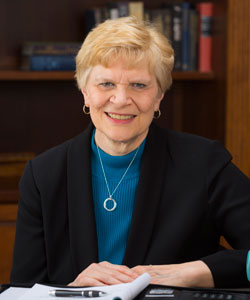
“Everyone was on board with making a recommendation that could be adopted and would improve our highest court and the public’s perception of it.” – Catherine Rottier
Rottier: This is what the “Wisconsin Idea” is all about. Our state has always been a leader in new and innovative ideas. No other state does it this way, so we would be unique and, more important, a leader in promoting a good-government solution to a real problem.
Shriner: Once justices get elected, they will know that they will never have to be a politician again. They won’t need to raise money or potentially be beholden to anyone. A single term of sufficient length will improve the collegiality among the justices and, we think, the public’s trust in a fair court.
How did you end up with the proposal for a single 16-year term?
Troy: The task force believed the single extended term was the best solution for the court and public, but the length of the term required much more deliberation. Ultimately, we concluded that a 16-year term was best for a number of reasons. First, the average term of a justice over the last half century was more than 13 years, so the new term length would not shorten the service of most justices. Second, we wanted the term to be long enough to attract a wide variety of individuals, but not so long as to grant anyone a life term. Finally, 16-year terms would allow stability and continuity within the court.
Shriner: Only one elected justice in the last 96 years has lost a reelection bid and only four incumbents running after being appointed by the governor have been defeated. The proposal gives a new justice plenty of time to get up and running and will allow each justice the opportunity to create a long-lasting judicial legacy.
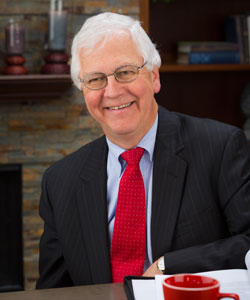
“The incumbents will serve out their current terms and then will have the same option as everyone else of running for a single 16-year term.” – Thomas Shriner
There are some in the legal community and on editorial boards who advocate for a merit selection system. Did the task force consider merit selection?
Bremer Muggli: We did study merit selection and had considerable, serious conversations about the pros and cons of such a system. Our conclusion was that a merit selection system just wasn’t politically feasible. Throughout our state’s history, judges have always been elected, and we don’t see that changing anytime soon.
Rottier: Going to a merit selection system doesn’t mean you are getting rid of elections. Every merit system includes retention elections, which can be just as nasty and political as the judicial elections we have seen in our state over the last few years. You don’t have to look any further than Iowa to see how bitter and divisive a retention election can be. We haven’t even mentioned the political problems surrounding selection committees or review processes, which we found in many merit selection states. We think that our proposal is better because it is politically neutral and has a chance of passing the legislature and being adopted by a popular referendum.
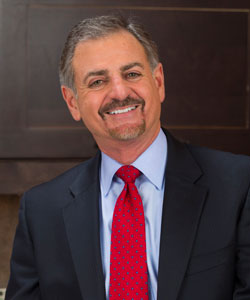
“We need to start having good conversations about how we want our highest court to be perceived by the public, as well as how it should operate.” – Joseph Troy
The judicial campaigns over the last 10 years have been getting more and more expensive. Wouldn’t the cost and the stakes be even higher for a longer, single term?
Shriner: We all brought ideas and suggestions on how we could deal with the substantial amount of money being funneled into judicial elections over the past few years. The U.S. Supreme Court largely controls the future of campaign finance laws, and any of our efforts to cap expenditures in judicial elections would most likely be futile. Our focus was to create a proposal that we as a state could control. We concluded that the best solution to the perception that justices running for reelection are not independent is to create a system that ensures that once a justice is in office, serving on the court, he or she won’t have to worry about funding a reelection campaign. It will give the public confidence that justices are making their rulings based on their reading of the law, not to avoid opposition in a future campaign or to guarantee future campaign contributions.
Judicial Task Force Members
Joseph M. Troy, task force chair (and steering committee vice chair), U.W. 1980, is a partner at Habush, Habush & Rottier S.C., Appleton, and a former Outagamie County Circuit Court judge. He is on the faculty of the National Judicial College and the Center for Justice and the Rule of Law. He was chair of the Public Trust and Confidence Task Force in 2000, sponsored by the State Bar of Wisconsin, the Wisconsin Supreme Court, and the Wisconsin League of Women Voters. He currently is chair of the State Bar Litigation Section.
Christine Bremer Muggli, Loyola Chicago 1978, is a partner at Bremer & Trollop S.C., Wausau. She is past president of the Wisconsin Association for Justice and has served on its board since 1991. She is past president of the Wisconsin Civil Justice Education Foundation and currently is chair of the Justice Fund. She was appointed to Governor Doyle’s Advisory Council on Judicial Selection. She currently serves on the board of the State Bar’s Litigation Section.
Catherine M. Rottier, U.W. 1986, is a partner at Boardman & Clark LLP, Madison. Her practice involves all facets of civil litigation, primarily on the defense side. She is a member and past chair of the Litigation Section board and has served in all officer positions for the Western District Bar Association and Wisconsin Defense Counsel.
Thomas L. Shriner Jr., Indiana 1972, is a partner at Foley & Lardner LLP, Milwaukee, where he has an active trial and appellate practice. He is a fellow of the American College of Trial Lawyers, a former member of the State Bar Board of Governors, and a past president of the Seventh Circuit Bar Association. He is an adjunct professor at Marquette University Law School, teaching civil procedure and federal courts, and a member of the Wisconsin Judicial Council.
Judicial Election Steering Committee Members
The steering committee includes the four task force members above plus the following:
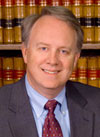 John Orton, Marquette 1981, steering committee chair, is a partner at Curran, Hollenbeck & Orton S.C., Mauston and Wisconsin Dells. He is a member of the State Bar Board of Governors, the Litigation and Administrative and Local Government Lawyers sections, and the Wisconsin Association for Justice.
John Orton, Marquette 1981, steering committee chair, is a partner at Curran, Hollenbeck & Orton S.C., Mauston and Wisconsin Dells. He is a member of the State Bar Board of Governors, the Litigation and Administrative and Local Government Lawyers sections, and the Wisconsin Association for Justice.
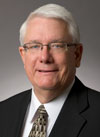 John E. Danner, Iowa 1979, is a partner in Harrold, Scrobell & Danner S.C., Minocqua. He is a member of the State Bar CLE, Bench/Bar, and Bar Membership committees. He also is a board member of Wisconsin Lawyers Mutual Insurance Co., the Oneida-Vilas-Forest County Bar Association, and the Iowa State Bar Association.
John E. Danner, Iowa 1979, is a partner in Harrold, Scrobell & Danner S.C., Minocqua. He is a member of the State Bar CLE, Bench/Bar, and Bar Membership committees. He also is a board member of Wisconsin Lawyers Mutual Insurance Co., the Oneida-Vilas-Forest County Bar Association, and the Iowa State Bar Association.
 Michael J. Cohen, Marquette 1986, is a shareholder with Meissner Tierney Fisher & Nichols S.C., Milwaukee, and serves on the firm’s Executive Committee. He concentrates his practice on complex commercial litigation. He is the past president of the Milwaukee Bar Association and currently serves on the Milwaukee Bar Association Foundation board and the State Bar Board of Governors. He has been active in a leadership role with the Milwaukee Justice Center.
Michael J. Cohen, Marquette 1986, is a shareholder with Meissner Tierney Fisher & Nichols S.C., Milwaukee, and serves on the firm’s Executive Committee. He concentrates his practice on complex commercial litigation. He is the past president of the Milwaukee Bar Association and currently serves on the Milwaukee Bar Association Foundation board and the State Bar Board of Governors. He has been active in a leadership role with the Milwaukee Justice Center.
 Brett H. Ludwig, Minnesota 1994, is a litigation partner at Foley & Lardner LLP in the Milwaukee office, where he practices in general civil litigation and complex business disputes and chairs the office’s Pro Bono Committee. He is a member of the Milwaukee Bar Association, serving on its Professionalism Committee; the Ozaukee County Bar Association; the Eastern District of Wisconsin Bar Association, serving on its Pro Bono and Civil Practice committees; and the Seventh Circuit Bar Association. He also serves on the State Bar Board of Governors.
Brett H. Ludwig, Minnesota 1994, is a litigation partner at Foley & Lardner LLP in the Milwaukee office, where he practices in general civil litigation and complex business disputes and chairs the office’s Pro Bono Committee. He is a member of the Milwaukee Bar Association, serving on its Professionalism Committee; the Ozaukee County Bar Association; the Eastern District of Wisconsin Bar Association, serving on its Pro Bono and Civil Practice committees; and the Seventh Circuit Bar Association. He also serves on the State Bar Board of Governors.
 Laura Verhoff, U.W. 1997, is a partner at Stafford Rosenbaum LLP, Madison, where she practices in the areas of estate and trust planning and administration and litigation and serves on the firm's board of directors. She also is an adjunct professor at the U.W. Law School, where she teaches introduction to estate planning. In addition to serving on the Judicial Election Task Force, she is a District Nine Governor for the State Bar's Board of Governors, vice-chair of the Policy Committee, and a member of the LRIS Committee. She also is a board member and fund-raising chair for the Wisconsin Equal Justice Fund Inc.
Laura Verhoff, U.W. 1997, is a partner at Stafford Rosenbaum LLP, Madison, where she practices in the areas of estate and trust planning and administration and litigation and serves on the firm's board of directors. She also is an adjunct professor at the U.W. Law School, where she teaches introduction to estate planning. In addition to serving on the Judicial Election Task Force, she is a District Nine Governor for the State Bar's Board of Governors, vice-chair of the Policy Committee, and a member of the LRIS Committee. She also is a board member and fund-raising chair for the Wisconsin Equal Justice Fund Inc.
Bremer Muggli: Sixteen years will also reduce the frequency of elections over time, from an average of once every year and a half to once every two and a half years. And we know that many highly qualified candidates don’t want to subject themselves or their families to negative campaigns. A fixed term with no possibility of reelection should attract good candidates, who are willing to run once in the interest of public service but who don’t want to get on the current reelection treadmill.
So what happens if this proposal passes and a justice is elected to a fixed term, but leaves office before the term expires?
Rottier: There is no change recommended to the current constitutional provision for gubernatorial appointments. The governor will maintain appointment power to fill judicial vacancies. And those appointees will still run in the following open spring election. This isn’t an area where there have been a lot of problems historically. A number of very able and distinguished justices got their start on the court by appointment. Over time, the longer term should spread out the time between supreme court elections, which would create more open election dates and shorter “appointed” terms before election. If voters don’t like the governor’s appointees, then they will continue to have the ability to vote them out.
How will the proposal affect the current elected justices?
Shriner: It won’t affect the current justices in any way. We’ve made the proposal quite clear that it doesn’t apply to the justices who are in office when it takes effect. The incumbents will serve out their current terms and then will have the same option as everyone else of running for a single 16-year term. This feature, along with retaining the gubernatorial appointment to fill vacancies, keeps the proposal as politically neutral as it can be. It doesn’t benefit any one candidate or one party over another. The only change is that any justices elected after its adoption won’t be able to serve on the supreme court beyond the end of their 16-year elected terms.
The task force report indicates that collegiality will be improved by the single-term proposal. Can you explain how?
Troy: Put yourself in the shoes of a justice who is planning to run for reelection. How would you feel if the justice who sits right next to you on the bench or in conference is publicly or privately opposing your reelection or actually helping recruit your next opponent? That is what happens now. The governor and legislature are political by constitutional design because the purpose of those elective offices is to carry out the popular will in the laws and policies of the state. But once elected to the high court, justices are supposed to dedicate themselves to the rule of law and the rule of law alone. That’s why our national framers provided life terms for federal judges.
Partisanship creates bad blood and interferes with collegiality. That’s something we can live with in the political branches, but want to significantly reduce in the judicial branch. We want to free justices from the demands and distractions of the politics of reelection for themselves and each other. Justices should vigorously debate and defend their convictions about the law, but we should not continue a system that breeds personal resentment and animosity. The politics of reelection are at least a distraction from the court’s mission and, as we’ve seen, can be the catalyst for the destruction of collegiality.
What is your plan to get this passed?
Orton: President Fiedler appointed our steering committee to help move this policy position forward. A proposed constitutional amendment must be adopted by two successive legislatures and then ratified by the voters in a referendum. This is a long process, and for good reason, as constitutional change should never be taken lightly. Originally, we had hoped to present this proposal to the current legislature, but we quickly thought better of that. We noted, first, that the short legislative session scheduled this spring didn’t afford much opportunity for consideration of the amendment this year and, second, that it was critically important, as an initial matter, to inform and educate our members regarding this proposal and the solid policy reasons supporting it.
The Board of Governors overwhelmingly supported this proposal. However, without the support of the general State Bar membership, this proposal doesn’t stand a chance in the legislature. Therefore, during the coming months, we intend to really make an effort to educate our members about this proposal. If our members agree with us that this is an excellent proposal, we will then present it to the legislature that takes office in January 2015 and make a determined push to get it approved.
Troy: It was gratifying to see the Board of Governors show overwhelming support of the plan. Now we need their help and help from the membership. We need to start having good conversations about how we want our highest court to be perceived by the public, as well as how it should operate. We as lawyers love the rule of law, and we love our system of justice, so the time is right for attorneys to find a better way. Not everyone will agree, but if we continue to stand on the sidelines, things won’t get better.
